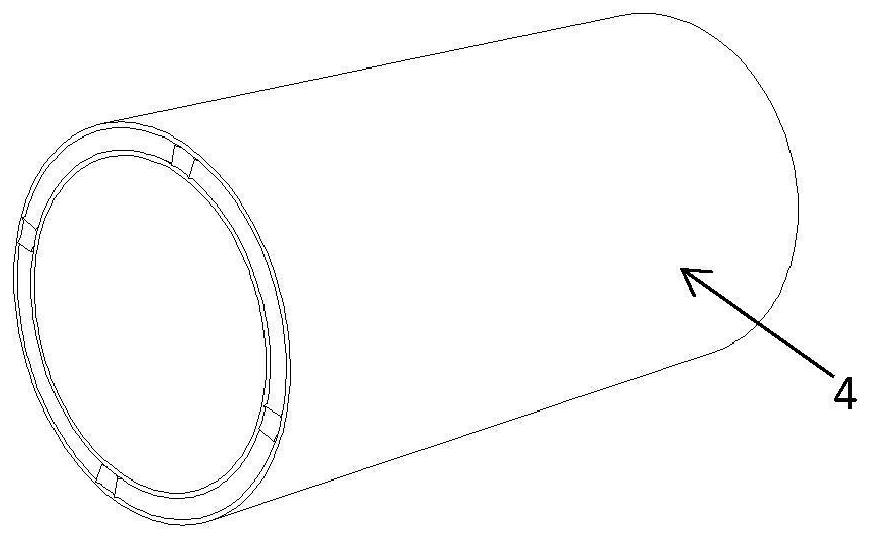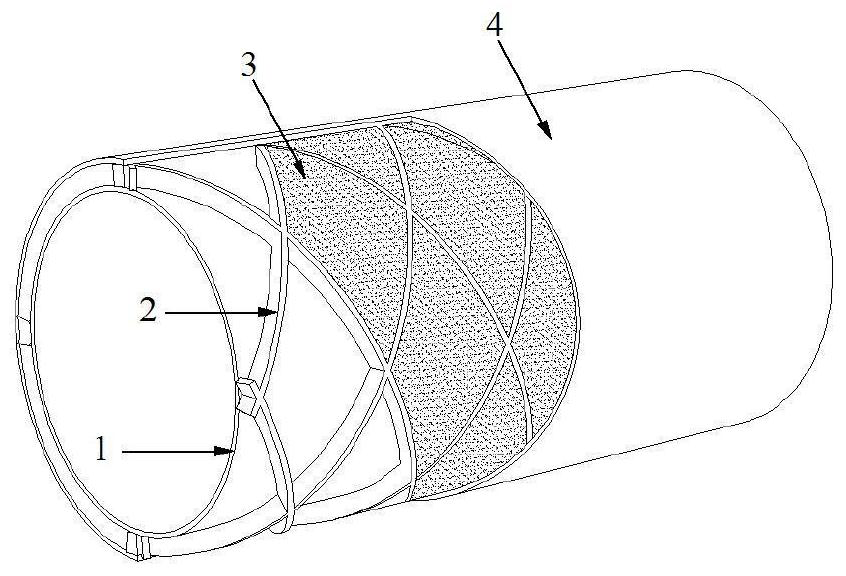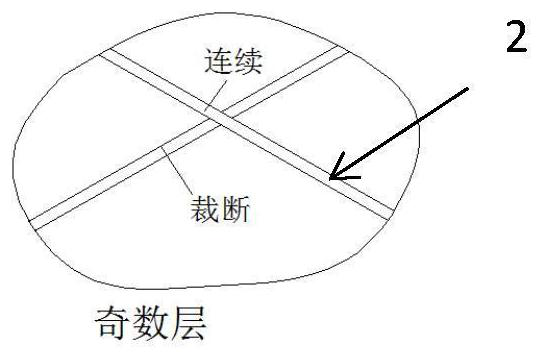A processing method for a light-weight and high-rigidity composite pressure-resistant shell structure of an underwater vehicle
An underwater vehicle and composite material technology, which is applied to household appliances, ships, other household appliances, etc., can solve the problems of insufficient interlaminar shear strength, large structural shear deformation, easy expansion, etc., to suppress internal cracks and Propagation of damage, reduction of shear stress and shear deformation, effect of reducing structural weight
- Summary
- Abstract
- Description
- Claims
- Application Information
AI Technical Summary
Problems solved by technology
Method used
Image
Examples
Embodiment 1
[0029] A light-weight and high-rigidity composite material pressure-resistant shell structure of an underwater vehicle of the present invention includes an outer surface layer and an inner surface layer wound by high-strength carbon fibers, and a composite material reinforcement arranged between the outer surface layer and the inner surface layer The ribs are filled with core material between the ribs; the ribs are arranged in a single hoop or "hoop + axial" or "spiral cross" arrangement; for a single hoop rib, the hoop wet winding method is used for manufacturing ;For "circumferential + axial" or "spiral cross" ribs, vacuum-assisted forming process is used for manufacturing; when the built-in ribs of spiral cross mode are used, the angle between the direction of the rib arrangement and the axis of the cylindrical shell is 45°~60° °; When the "circular + axial" or "spiral cross" arrangement is adopted, the reinforcing ribs cross each other from two directions. When laying, the ...
Embodiment 2
[0043] Such as Figure 5As shown, the internal reinforcing ribs in this example are arranged axially and circumferentially crosswise, the material system and molding process scheme of the surface layer and reinforcing ribs are the same as in Example 1, and the core material is made of lightweight materials (such as foam materials, buoyancy material) to further reduce the weight of the structure, and the core material adopts a casting molding process.
[0044] Composite reinforcement ribs adopt a vertical (or horizontal lay-up) clamping lay-up connection scheme, and adopt an integrated vacuum forming process to form between the inner surface layer and the core material of the pressure-resistant shell, such as Figure 6 shown.
Embodiment 3
[0046] Such as Figure 7 As shown, the internal reinforcing ribs in this example adopt a single circumferential arrangement, and the material system of the surface layer, core material and reinforcing ribs can be the same as in Example 2, and the same function can be achieved. At the same time, the reinforcing ribs in this scheme can be It is directly manufactured by hoop wet winding, which is more convenient for engineering manufacture than Example 1 and Example 2.
[0047] The middle core material adopts the method of oblique lap surface, and the lap angle is 20°~90° for strong connection through high-strength epoxy glue, such as Figure 8 shown.
PUM
| Property | Measurement | Unit |
|---|---|---|
| density | aaaaa | aaaaa |
| elastic modulus | aaaaa | aaaaa |
| compressive strength | aaaaa | aaaaa |
Abstract
Description
Claims
Application Information
 Login to View More
Login to View More - R&D
- Intellectual Property
- Life Sciences
- Materials
- Tech Scout
- Unparalleled Data Quality
- Higher Quality Content
- 60% Fewer Hallucinations
Browse by: Latest US Patents, China's latest patents, Technical Efficacy Thesaurus, Application Domain, Technology Topic, Popular Technical Reports.
© 2025 PatSnap. All rights reserved.Legal|Privacy policy|Modern Slavery Act Transparency Statement|Sitemap|About US| Contact US: help@patsnap.com



